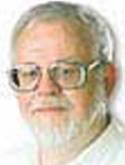EVERYONE HAS BEEN A BULLY
One of the major campaigns in 2011, thank heavens, was the concern over bullying. May it continue for years.
I certainly have been bullied. But I must confess that I have been guilty of psychological bullying too, like most of you, where you pick the weakest member of the pack, whether at work or play or the neighbourhood, and make snide jokes at their expense and generally freeze them out.
Bullying is not just picking on the little kid or the nervous gay and beating them up. The mind games throughout life are not bloody but more savage.
Back when I was the littlest kid in the class, and an orphan to boot, life was hardly grand in the playground or on Saturdays.
 In Grade 2, a big kid cut my cheek open with a whip. It took years for the scar to disappear. It wasn't glamorous like in a musketeer movie.
In Grade 2, a big kid cut my cheek open with a whip. It took years for the scar to disappear. It wasn't glamorous like in a musketeer movie.Dick made life miserable for me for years too, even though, looking back, the town of Chesley, all 1,800 of us, was not really mean.
Then came my growth spurt. I went from from the smallest to the biggest in the class. Dick hadn't noticed. So he picked on me, and the circle formed, and the chant of fight fight fight went up, and I knocked him cold with one blow.
I hadn't yet become accustomed to being big, so I pleaded forgiveness for hitting so hard.
We became friends, especially when he failed a year and was wearing thicker glasses than I did. We kept in touch even after I moved to Weston, and a high school of 1,500 rather than the 250 in the school I had nervously left behind.
With good reason. There's nothing crueler to a new student than a Grade 11 class where many have been together since kindergarten. We no longer fought with fists but with words. Cold shoulders were ritualistic.
The cruelty in the relationship of children must be milked out by example and common sense by both schools and parents. But let's not just stop there because many adults are careless in their ridicule of the funny neighbour or the strange guy at work.
At the old Telegram, we had a nervous reporter who drove all of us nuts. He was flamboyantly Jewish, which didn't help, and he was a busy body (which makes for a good reporter) who could be counted on to poison any casual conversation with prying questions.
One night shift on the rewrite desk, I listened to him shouting on the telephone and pushed down a special key to listen in. I got others to do so too. And we found he was arguing with a recorded Bell message. I told that story about Harry for years, and then he won a major newspaper award.
Good for him. Bad for me. But how many people out there wouldn't have repeated such an anecdote for years even though it made Harry look like an idiot.
You need to feed a sense of confidence and self-worth into kids, although these days some kids get drunk on entitlement and act like they're the main star in the universe.
But if you make kids feel that they matter, they can't really be bullied deep down, even if they get the occasional bloody nose. If you won't let them push you around, the bullies moved on to softer targets.
As for the bullies who are always with us, treat them as if there were diseased and bully them right back with every law in the book. They are the jackals of society and any lion won't let them get close to the warmth of the campfire.






























